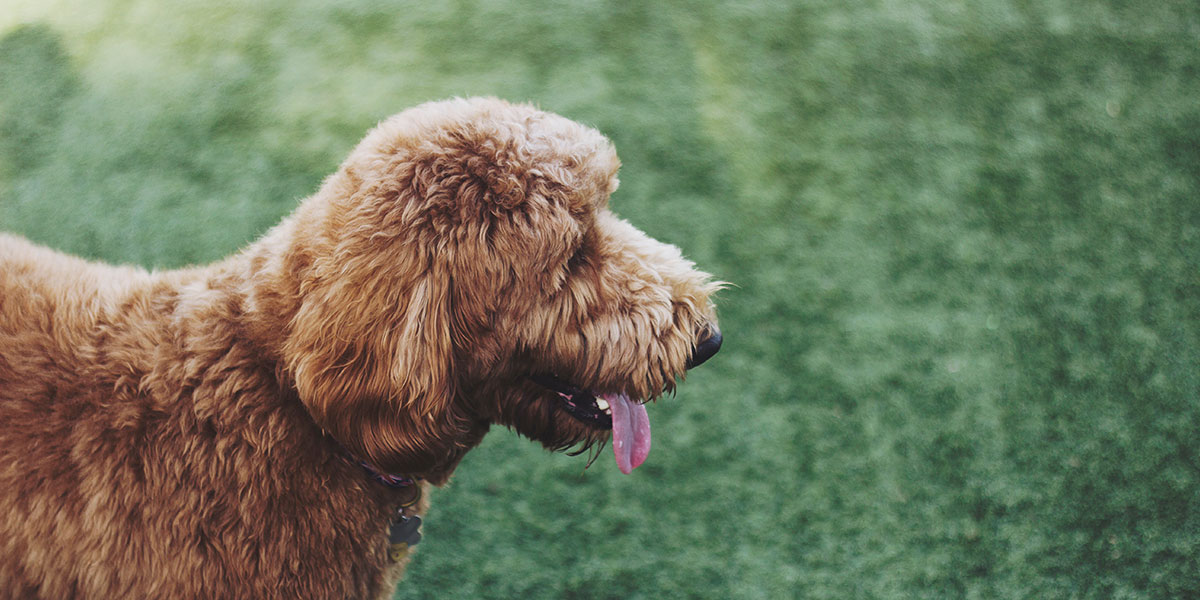Taking too long? Close loading screen.

June 24th
Nothing is better than snuggling up against your puppy’s fur. Unfortunately, their soft coat is inviting to more than just humans. Fleas are drawn to dog fur like moths to a flame, and can be quite a pain to get rid of.
If you live in an area with fairly cold winters, you likely won’t have to worry about fleas. But as summer approaches, fleas begin to reappear, as the warmth and humidity make for the perfect conditions for reproduction. Before the fleas appear, you should make sure that you’re ready.
Fleas can burrow into your dog’s skin, drawing blood to feed themselves. They also spread easily between dogs, making it difficult to contain an infestation.
It’s important to spot any fleas early on so that you can take steps to prevent them from reproducing. Here, we’ll show you how to spot fleas and keep your dog’s coat pest free.
The easiest way to spot fleas is to look at your dog’s behavior. Fleas dig into the skin, sucking out blood. These bites can cause quite a bit of irritation, making your dog itch all over.
Dogs infested with fleas often respond by constantly scratching at their belly or behind their ears. They may also start chewing on the infected areas, sometimes causing bleeding. Many dogs will also start shaking their head to stop the itching around their ears.
If you’ve noticed any of these behaviors, it’s time to check your dog’s coat for fleas. Although fleas are visible, you’ll need to look carefully.
They are small, normally around the size of a grain of sand, and most are dark brown or tan. They jump around a lot, which may make them easier to spot.
Fleas don’t like light, so they tend to hide in the parts of your dog’s coat that get the least amount of sun. To start inspecting, turn your dog over onto their belly. Fleas like warmth and moisture, so they often hide out around the armpits.
See if your dog has been scratching the area, and keep an eye out for any redness, bleeding, or swelling. Also look behind their ears, as they may be red from excessive scratching. You may notice hair loss as well from the licking, chewing, and scratching.
Once you’ve checked out your dog’s fur and think you’ve identified the presence of fleas, it’s time to break out a flea comb. This is just a comb with very narrow teeth. When you pull it through your dog’s coat, it catches fleas and drags them out from hiding.
Get a good hold on your dog and start pulling the comb through their fur, making sure to push down so that the comb grazes the surface of the skin. If you don’t push down far enough, you won’t reach the places where the fleas like to hide. As you work, keep a dish or bowl by your side with water so that you have a place to put the fleas.
As you comb, keep an eye out for “flea dirt.” This is a term used to describe the flakes that fleas leave behind, which are the dried blood that they have been feeding on.
If you take this flea dirt and put in on a paper towel, it will make a red blotch, almost like a small blood stain.
Although fleas love dogs, many will start to wander, jumping off your dog’s fur and into rugs and carpets. Check your house for any signs of fleas, paying more attention to your dog’s favorite areas.
If your dog has a chair or bed that they use frequently, you’ll likely find plenty of fleas on the surface. Look here for fleas, and keep an eye out for flea dirt as well.
You can also look for fleas by taking a white paper towel and wiping areas where your dog has been lying down. You’ll pick up flea dirt, which will often turn red when it comes in contact with the paper towel.
If you want to trap some live fleas, you can use a simple trick that involves a light source and a bowl of water. Place the light next to a bowl of water in an area where you suspect the presence of fleas. Turn out the lights and wait.
Fleas, like other insects, are drawn to light, and many will try to jump toward it, falling into the bowl of water. When you come back to the bowl, you might find some fleas trapped in the water.
If you have any questions about fleas, you should reach out to your vet. They can walk you through treatment options, as well as ways to prevent fleas in the future. They can also take a look at your dog to make sure that they really do have fleas, and not some other parasite.
If you’re searching for a new dog, head to our puppy finder page. At Uptown Puppies, we help you find the perfect puppy, connecting you to a network of experienced breeders and companies.
Every breeder we work with puts the health of their puppies first. That means no backyard breeders and no puppy mills.
Find the Perfect Puppy